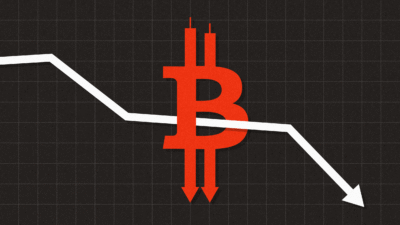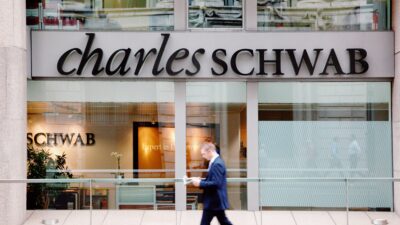What’s the Difference Between 351 Exchanges and Exchange Funds?
Either one of these popular tax-advantaged strategies can help clients diversify and defer tax bills, but they can be complex as well as costly.

Sign up for exclusive news and analysis of the rapidly evolving ETF landscape.
Advisors are taking advantage of two tax-deferral and diversifying strategies for high-net-worth clients that can sound pretty similar: 351 exchanges and exchange funds. (We mixed them, too.)
The reason for the increase in popularity is that after several years of high equity market returns, clients may have large stock positions and are likely sitting on sizable unrealized capital gains, which may make it difficult to rebalance portfolios without a significant tax bill. Either one of these tax-advantaged strategies can help clients diversify, but they are complex and costly to enact. Keep in mind, advisors will want to consult with tax and legal experts, along with fund issuers, to ensure a smooth transition. But, while both strategies have the word “exchange” in their names, 351 exchanges and exchange funds address different client needs, so knowing the difference matters.
The 411 on 351 Exchanges
A 351 exchange allows advisors to take a client’s already-diversified portfolio and put its holdings into an actively managed exchange-traded fund without immediately triggering capital gains. These funds can accept liquid, long securities, usually equities or fixed income. However, some emerging market securities and most derivatives aren’t eligible, said Brittany Christensen, head of business development at Tidal Financial Group, a white-label ETF provider which has created some of these ETFs. No single security can occupy 25% of what a client contributes, and no more than 50% of the holdings can be in fewer than five securities. That includes both single stocks and any holdings in index funds that are put in the strategy.
These are a relatively new option for financial advisors. Matt Nelson, managing partner and wealth manager at Perspective 6 Wealth Advisors, said he sees them being used to help clients who have sprawling portfolios on which rebalancing would incur a sizable tax hit. The 351 exchanges are also commonly used by advisors who initially relied on direct indexing to tax-loss harvest and need another tax-mitigating strategy, he added.
That’s a Game Exchanger
Exchange funds, on the other hand, may be a better option for clients who own a highly concentrated stock position and need to diversify while deferring taxes. The fund usually tries to match the performance of an index, such as the S&P 500 or the Nasdaq 100. These strategies have been around for a while, but they have become popular lately because of the rise in equity valuations and more people getting stock compensation as part of their jobs. “Exchange funds are not a panacea, but they can provide a means to reduce your risk via diversification,” said William Connor, partner at Sax Wealth Advisors. “It’s not going to eliminate your capital gain.”
A unique aspect of traditional exchange funds is that 20% of the holdings need to be in a real asset, like real estate, said Evan Rothschild, senior wealth advisor at Focus Partners Wealth.
For clients who don’t want to use traditional exchange funds that include real estate, there are synthetic exchange funds that use options, he said.
While both are tax-deferral strategies, there are a few other differences for advisors to consider. Exchange funds are limited to accredited investors, have investment minimums of at least $100,000 and a lock-up of seven years. Aaron Brask, fiduciary investment advisor at Aaron Brask Capital, said the funds are typically limited partnerships and have high fees. Traditionally, a handful of investment banks have created them, although new players, such as Cache Financials, are entering the space. Rothschild said his clients usually invest $1 million as a minimum, although some fund managers may execute the strategy with less. Because of the illiquidity of these funds, Rothschild said he only wants to use an exchange fund for 20% to 25% of a client’s portfolio.
Who’s Down to Launch an ETF?
With 351 exchanges, there are no eligibility exclusions, nor any strict holding periods. However, Jim Besaw, chief investment officer of GenTrust, said the point of these newly created ETFs is to hold the funds and not sell them immediately. There are also no strict minimums on asset size to pursue a 351 exchange, he said. Given the funds’ creation costs, including involving accountants, lawyers and the cost to work with a fund issuer, a client should have several hundred thousand in assets, if not at least $1 million to make it feasible.
Christensen said costs to launch a new ETF will vary. At Tidal, the initial upfront cost is $70,000 to $80,000, which includes startup costs and registration, in addition to legal fees and tax opinion costs. Once the ETF is launched, there is the ongoing expense ratio to manage the fund. “There’s definitely some fixed costs, and those vary pretty wildly depending on what type of solution or service provider you end up going with,” she said.
Because 351 exchanges are relatively new, Christensen cautions advisors to carefully review the ETF investment thesis and prospectus if they’re thinking of using the strategy. These ETFs will become publicly traded, unlike exchange funds, which stay private. “Do you know what’s going to happen to those securities once they’re in the ETF vehicle? Because you’re essentially giving them to a portfolio manager who is now going to manage it in line with what they’ve laid out in the prospectus,” she said. For example, that means a large-cap ETF can only accept large-cap stocks such as Apple or Tesla.
Don’t Lose Control. Aside from the costs, shifting assets to 351 exchanges or exchange funds means giving up a lot of flexibility, and for 351 exchanges, control over the assets. Mitch Hamer, founder and lead advisor at Intersecting Wealth, has looked at 351 exchanges for his clients. Because these are designed to be long-term holdings, advisors need to own the new ETF for the long-term and have faith that the ETF manager will execute the strategy in the same way they always have. He said there are other strategies that can be tax sensitive, such as using options, (which he prefers) or transferring highly appreciated securities to charities in a donor-advised fund. There’s also the possibility of gifting securities to children and grandchildren.
“I like these [351 exchanges] as a diversifier, but then you start to realize there are other tools out there, too,” Hamer said.











